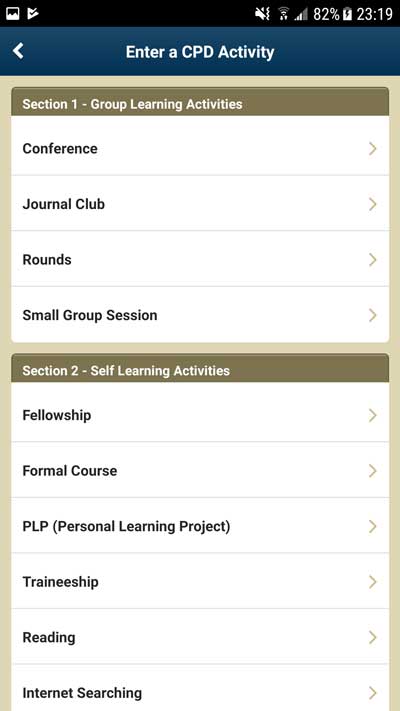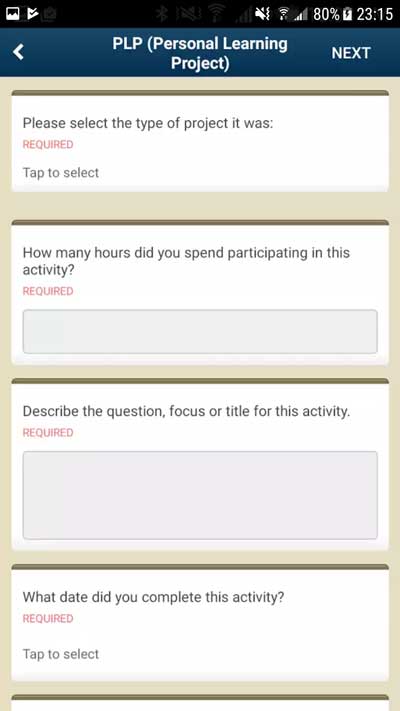Fall 2017 (Volume 27, Number 3)
CPD for the Busy Rheumatologist
Effective and Efficient Clinical Learning: Is Real-time Learning Possible to Build Your MOC Credits?
By Raheem B. Kherani, BSc (Pharm), MD, FRCPC, MHPE; Jerry M. Maniate, MD, M.Ed, FRCPC; and Craig C. Campbell, MD, FRCPC
Download PDF
“After having read the article, Continuing Professional Development (CPD) for the Busy Rheumatologist in the summer 2017 issue of The Journal of the Canadian Rheumatology Association (CRAJ), I reviewed the Royal College of Physicians and Surgeons of Canada (RCPSC) website (www.royalcollege.ca/rcsite/cpd/moc-program/moc-framework-e) and am aware that all the rounds I go to are potential opportunities for Maintenance of Certification (MOC) section 1 credits. Is there something more I can do?” asked Dr. AKI Joint, a rheumatologist member of the CRA.
“It’s nice to record learnings for Section 1 through rounds, but what about recording questions I look up stimulated by my review of activities with patients?” reflected Dr. Joint. “Section 2 credits are an easier way to accumulate credits and self-learning, through a reflection of actual needs in my rheumatological practice.”
“Last week in clinic, I was referred a 37-year-old female with a polyarthritis, fever and fatigue with a very elevated ferritin level. The presentation, although consistent with adult-onset Still’s Disease caused me to reflect on the following question: What may be additional evidenced-based treatment options, in addition to prednisone? Is the learning I intended to complete to answer this question from my day-to-day practice something that I am able to report for credit?”
“On the Royal College website, I read about several strategies for Planned Learning that are part of Section 2. If I completed a personal learning project this would definitely qualify for credit in Section 2. In my case of adult-onset Still’s Disease, I already had a defined question and then created a plan to look at the latest evidence. Based on my reading I concluded that further treatment options that should be considered include [...] And, after arriving at this conclusion, I noted the time spent on this personal learning project was two hours. But, how would I record this in MAINPORT? ”
Personal Learning Project
In MAINPORT, I found a template that allowed me to record each of the following:
- Type of project: Addressing clinical or academic questions across the CanMEDS framework
- Hours spent: 2 hours (= 4 credits)
- Description of the question: What are evidence-based treatment options beyond steroids for adult-onset Still’s Disease?
- Date: October 19th, 2017
- Resources used: (1) UpToDate (website); (2) Klippel JH, Dieppe PA. Rheumatology 1998; and (3) Pouchot J, Arlet JB. Biological treatment in adult-onset Still's disease Best Pract Res Clin Rheumatol. 2012 Aug;26(4):477-87.
- Reflection questions: To solidify items learned and assist with practice implementation. This is where I recorded the key outcome or learning for me!
- Relevant CanMEDS roles: Collaborator, Communicator, Health Advocate, Manager, Medical Expert, Professional and Scholar
“In the past, I kept folders on my CPD activities and sat down at the end of the year for my annual ritual of recording all CPD activities into the MAINPORT system. I also read on the Royal College website (www.royalcollege.ca/rcsite/resources/access-royal-college-apps-e) that the system now includes a MAINPORT app for iPhone and Android users (see Figures 1, 2 and 3). This encourages real-time logging and capturing of learning opportunities and tracking of queries. Now, I can use the app to incorporate real-time tracking of learning I am doing to further the care of patients.”
The MAINPORT app encourages and enables recording of these natural clinical learning activities centred around patient care.
Stay tuned for more adventures of Dr. AKI Joint, and her journey of learning through exploration of MOC Section 3 credits.
Acknowledgement to Dr. Barry Koehler (a CRA Past-President), for the initial discussion that lead to this article series, immediately following the 2017 CRA Annual Scientific Meeting (ASM).
Raheem B. Kherani, BSc (Pharm), MD, FRCPC, MHPE
CRA Education Committee Chair
Clinical Associate Professor, University of British Columbia
Medical Lead, Arthritis Program, GF Strong Rehabilitation Centre
Vancouver, British Columbia
Rheumatologist, West Coast Rheumatology Associates
Richmond, British Columbia
Jerry M. Maniate, MD, M. Ed, FRCPC
Chief, Medical Education,
Research and Scholarship, St. Joseph's Health Centre
Assistant Director of Researchers, Wilson Centre,
University of Toronto
Toronto, Ontario
Craig M. Campbell, MD, FRCPC
Director, Continuing Professional Development,
The Royal College of Physicians and Surgeons of Canada
Ottawa, Ontario
_Dr_AKIJoint.png)
Figure 1. MAINPORT app interface.

Figure 2. Section categories.

Figure 3. Personal learning project questions.
|




